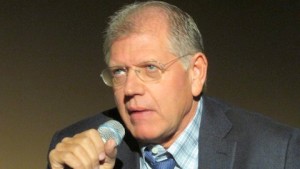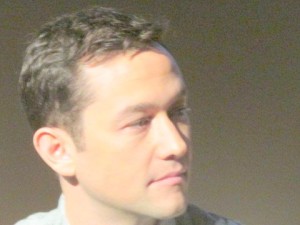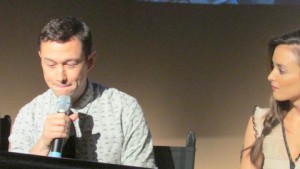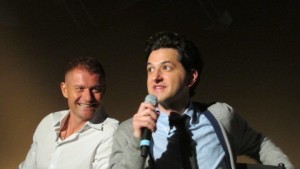A Conversation with Oscar® winner Michael Moore at the New York Film Festival
Moore’s latest film, “Where to Invade Next” explores the current state of the nation.

Michael Moore and Susan Kouguell
Twenty-six years ago — (Michael Moore reminded me how long ago it was) — I was an acquisitions consultant for Warner Bros. and discovered a new documentary at the Independent Feature Film Market. I ran to the payphone (yes, pre-cell phone days) downstairs at the Anjelica Film Center and called my boss to tell her she must see it. The film was “Roger & Me.” Warner Bros. picked up the film.
Since then, Moore continued making provocative and impassioned films, including the Academy Award-winning “Bowling for Columbine,” “Sicko,” “Fahrenheit 9/11,” and “Capitalism: A Love Story.” Moore’s latest film, “Where to Invade Next” explores the current state of the nation.
Moore: “My film is about us. I just decided to tell a story about America without shooting a single frame of the movie in the United States.”
Former Radius Founders and Co-Presidents Tom Quinn and Jason Janego are teaming with Alamo Drafthouse Founder and CEO Tim League to form the yet-to-be-named distribution label and will distribute “Where to Invade Next.”
Here are highlights from the New York Film Festival press screening.
The idea for the film
“I was 19 and I just dropped out of college. I got the Eurail pass and youth hostel card and spent a couple of months going around Europe. I was in Sweden and broke a toe, and I was sent to a clinic. I went to pay the bill and there was no bill. I never heard of such a thing. And all through Europe I kept running into things like that. And I thought why can’t we do that? The idea grew organically as most of the things do in my films.”
Planning ahead
“Don’t give me too much credit for thinking this out a whole lot in advance. We don’t think it would be really cool to sit down at the lunch table with a can of Coke and see what the kids do.
The best stuff is what I don’t plan out. What my field producers do in terms of research — I have them tell me only the basics, I don’t want to know any of the research. When the Italian couple (in the film) tells me about the 15 days paid vacation, this is the first time I’ve heard it, even if the field producers know it. I don’t want to act. We don’t do a second take. If the sound guy says we didn’t get it, you can’t ask them (the subjects) to do it again. We’ve seen too many documentaries like that. It has to happen with them and me in the moment.”
No, Michael Moore is not running for office
“…to say that you have the right to regulate a woman’s uterus but not guns? It’s like, I think the only safe place for guns is in a woman’s uterus. Then
they would be regulated by our Republican congress!
I talk politically a lot, but if I really just wanted to make political speeches, I would run for office or give sermons.”
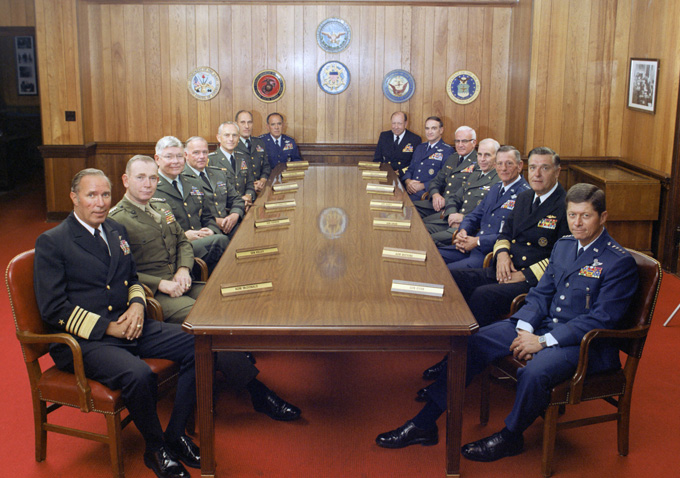
“I went to pick the flowers and not the weeds.”
A line from Moore’s film, which he further details: “Every country has a lot of problems. I didn’t go there to make a film about your countries. There are
a lot of things you’re dealing with, but that’s not my film. My film is about us, not about you. I just decided to tell a story about America without
shooting a single frame in the United States.”
About Michael Moore’s Happiness
“The difference about this film (compared to his others), some people say it’s not so angry, (that) I’m happier. I’m angrier than ever. Maybe I came up
with a more subversive way to deal with that anger with the condition of this country.”
In closing
“We’re filmmakers. We love the art of cinema and we love what it can do to move people through fiction or non-fiction.”
READ MORE HERE












